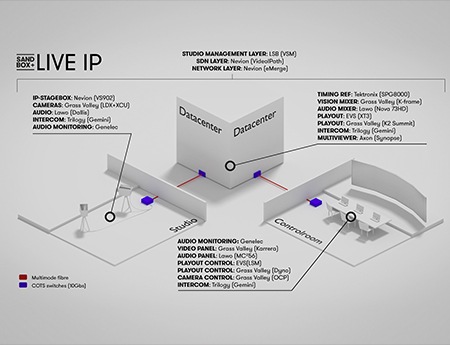IP Video: If You Build It, Will They Come?

As broadcasters and technologists arrived in Amsterdam for IBC2015 last week, there was a growing consensus that IP video, or video using Internet Protocol, will be the basis of the next generation of television.
Here, much progress has already been made. IP video is widely used in areas such as newsroom systems, editing, file-based workflows, distribution of feeds from news crews back to the studio and of course streaming video over the Internet.
But a number of hurdles still remain as the industry tries to take IP video further into its infrastructure. Serial digital interface (SDI), first standardized by the Society of Motion Picture and Television Engineers in 1989, is still almost exclusively used for live production in the TV industry, thanks to its time-tested reliability, quality and compatibility with existing equipment and workflows.
That makes an effort by the European Broadcast Union, the Belgium pubcaster VRT and a variety of vendors to test what they call “the world’s first live IP studio” in the next few months particularly notable.
Visitors to IBC got a look at a scaled-down version of the full studio, which was under construction between April and August this year at the VRT offices in Brussels. The full studio in Brussels includes equipment and products from Axon, Dwesam, EVS, Genelec, Grass Valley, Lawo, LSB, Nevion, Tektronix and Trilogy.
Michael De Wolf, director at Dwesam Engineering, who came up with the idea for the project, said that he began talking about the idea last year with vendors and broadcasters. Vendors were looking for a way to see if their IP-based equipment would work with other equipment and “broadcasters were saying that they would like to adopt [IP infrastructures] and could see a lot of advantages,” he explained.
PUSHING THE DIGITAL SHIFT
Broadcasting & Cable Newsletter
The smarter way to stay on top of broadcasting and cable industry. Sign up below
Those advantages, according to those involved, include greater flexibility, lower costs, the ability to scale operators to handle new formats such as 4K, more efficient operations and most important, the prospect of using one infrastructure for both broadcast and digital operations.
“We are doing this to enable the digital shift, and its new ways of creating content, to provide the ability and scalability of IP and to prove it can do more with less,” explained, Karel De Bondt, project manager at VRT.
The IP studio is part of a larger effort with the EBU and iMinds to launch the VRT Sandbox technology accelerator program where the broadcaster does short-term tests of ideas and products from start-ups.
The all-IP studio is being tested by VRT production crews but isn’t currently being used to produce live programs for the broadcaster’s schedule, De Bondt noted, though it will help them prepare for the transition.
The participants have completed phase 1, which consisted of building the IP system and getting it to work. Phase 2, scheduled to be completed in October, will consist of producing a prerecorded multi-camera talk show. In the final phase 3, running from October 2015 to January 2016, they will produce a live TV show, with six cameras and live-streaming.
“We chose a practical approach with what is available today [and showed] it is possible in a short time line thanks to great collaboration with diverse vendors and hard work at VRT,” said Félix Poulin, senior project manager, networked media production, technology and innovation at the EBU.
A key part of the system development has been the use of existing standards. “On the video transport we have chosen SMPTE 2022-6, for the audio layer we put AES-67/Ravenna and on the timing we decided for the PTP [picture transfer protocol],” De Wolf explained in a webinar about the technical infrastructure.
But as the work continues, the effort could also help improve standards. “We are interested to learn from the early users to inform further standard development such as the EBU/SMPTE/VSF Joint Task Force on Networked Media,” said Poulin.
INNER WORKINGS
The IP studio setup includes a studio, control room and data center connected by three fiber links.
The studio includes an LDX camera and base station from Grass Valley, which supports input and output streams over IP, DeWolf said, with the camera control panel located in the control room and connected over IP.
An SDI-to-IP stage box from Nevion is used in the studio to integrate the video monitoring; for audio, they have a Dallis frame from Lawo connected over IP to the Lawo Nova 73HD audio router in the data center, and to the Lawo audio console mc2 56 in the control room.
In addition, the Genelec audio monitoring speakers are connected to the Lawo system by means of the Ravenna IP protocol. Each of the Trilogy intercom panels is interconnected over IP to the Trilogy Gemini matrix in the data center.
The data center includes an SPG 8000A from Tektronix, an EVS XT3 slo-mo server and a Grass Valley K2 video server equipped with SMPTE-2022-6-based I/O cards. A Karrera video panel from Grass Valley handles video mixing.
In the control room there is an LSM control panel connected to the server over IP as well as the Dyno control panel and an Axon Synopsis multiviewer frame.
DeWolf added they “do not have any SDI router…this functionality is completely taken over by the network.”
